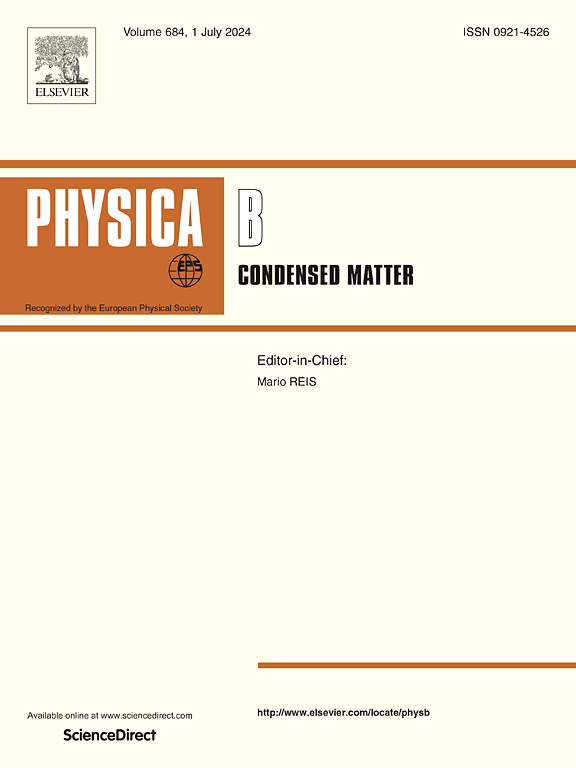Emergence of multiple distillable and bound entangled states in a spin-star system
IF 2.8
3区 物理与天体物理
Q2 PHYSICS, CONDENSED MATTER
引用次数: 0
Abstract
In quantum systems, entanglement is a fundamental characteristic wherein the state of one particle is inherently interconnected with the states of other particles, even in cases when they are physically distant from each other. Conversely, the phenomenon of distillation pertains to the capacity to extract states with high entanglement from states with lower entanglement. Specifically, it entails the conversion of a collection of quantum states into a reduced set of states with maximal entanglement through the utilization of local operations and classical communication. Through practical and theoretical tools, Barreiro et al. in [Nature Physics, 6, 943 (2010)], showed how the quantum state of a four-qubit system is placed in non-distillable conditions. They showed that the condition which is referred to as the bound entanglement domain occurs when there is entanglement between only some conceivable configurations for subsystems. In addition, they showed that the condition in which there is entanglement in any possible arrangement of system’s components is called free entangled region, which is also distillable. Nevertheless, a significant difference between the findings of the above study and the challenge in the present work can be briefly described as follows: the study by Barreiro’s group showed the existence of a single bound entangled region in their target system, while the present study, indicates the existence of two distinct bound entangled regions. For this purpose, a spin-star system with Heisenberg and Dzyaloshinskii–Moriya interactions has been proposed. We will also show in what conditions the separable regions in terms of entanglement and the free entangled domain will exist.

求助全文
约1分钟内获得全文
求助全文
来源期刊

Physica B-condensed Matter
物理-物理:凝聚态物理
CiteScore
4.90
自引率
7.10%
发文量
703
审稿时长
44 days
期刊介绍:
Physica B: Condensed Matter comprises all condensed matter and material physics that involve theoretical, computational and experimental work.
Papers should contain further developments and a proper discussion on the physics of experimental or theoretical results in one of the following areas:
-Magnetism
-Materials physics
-Nanostructures and nanomaterials
-Optics and optical materials
-Quantum materials
-Semiconductors
-Strongly correlated systems
-Superconductivity
-Surfaces and interfaces
 求助内容:
求助内容: 应助结果提醒方式:
应助结果提醒方式:


